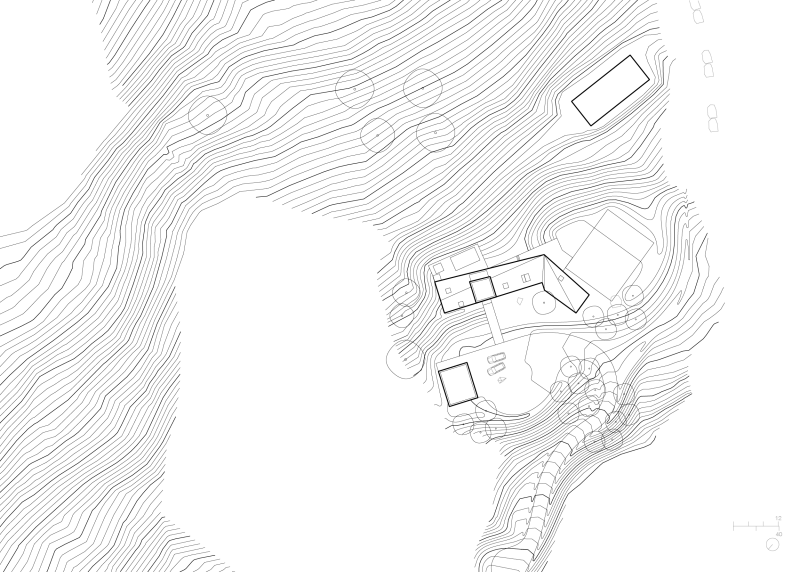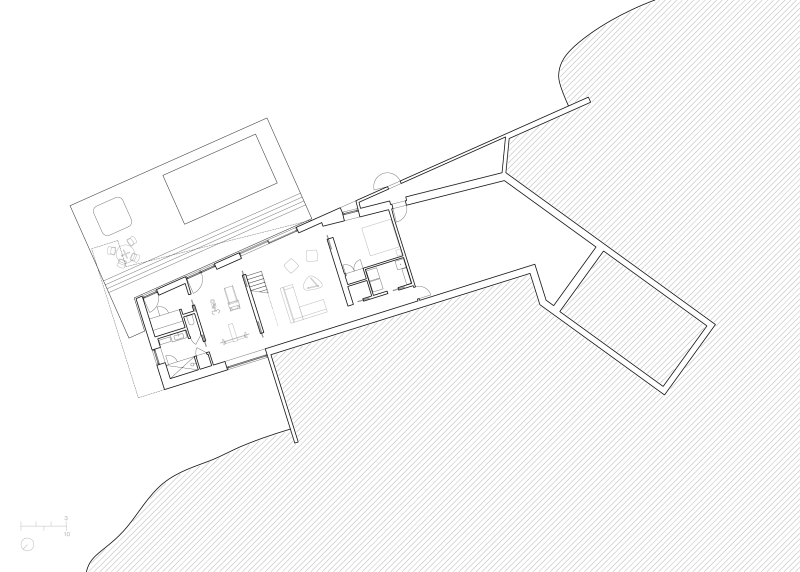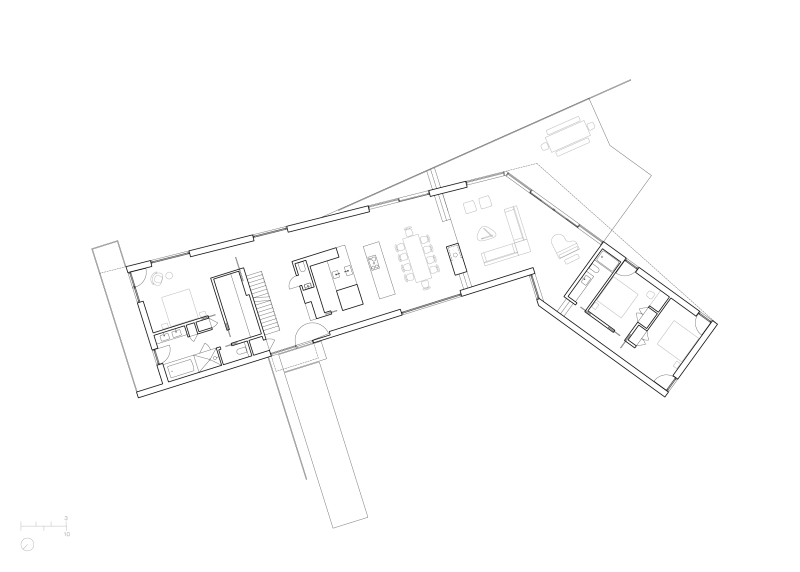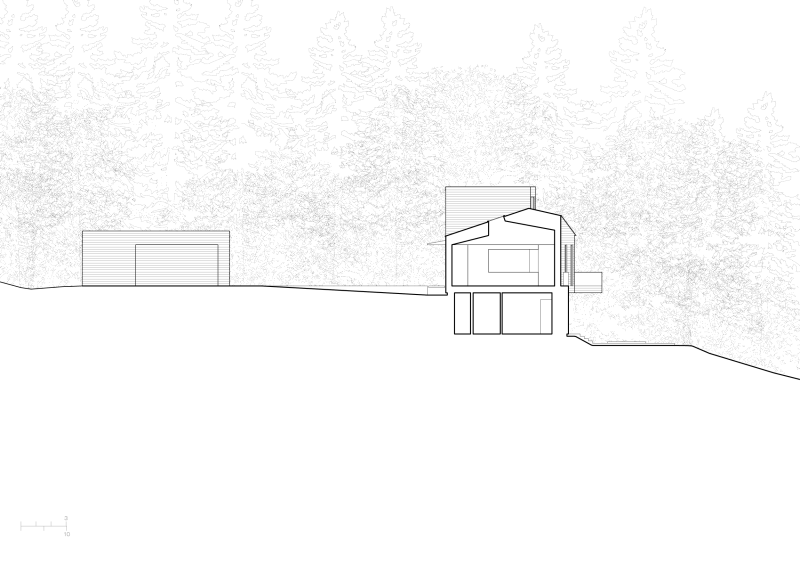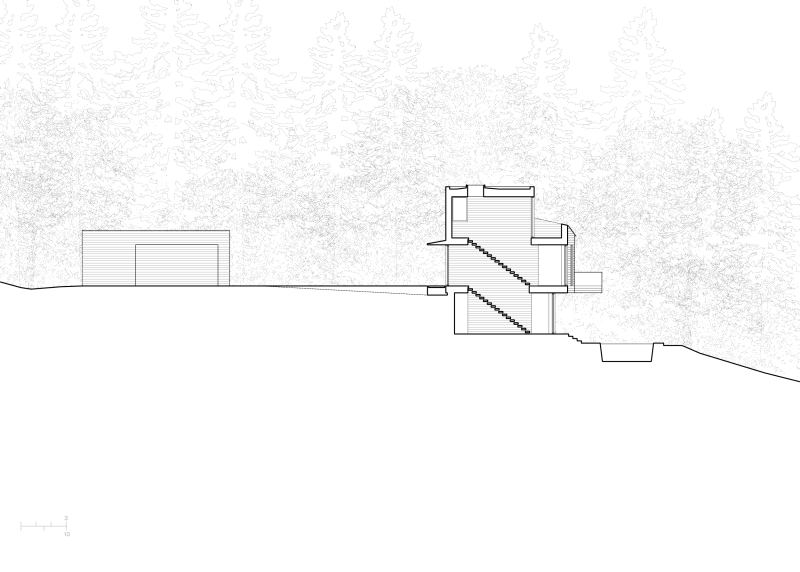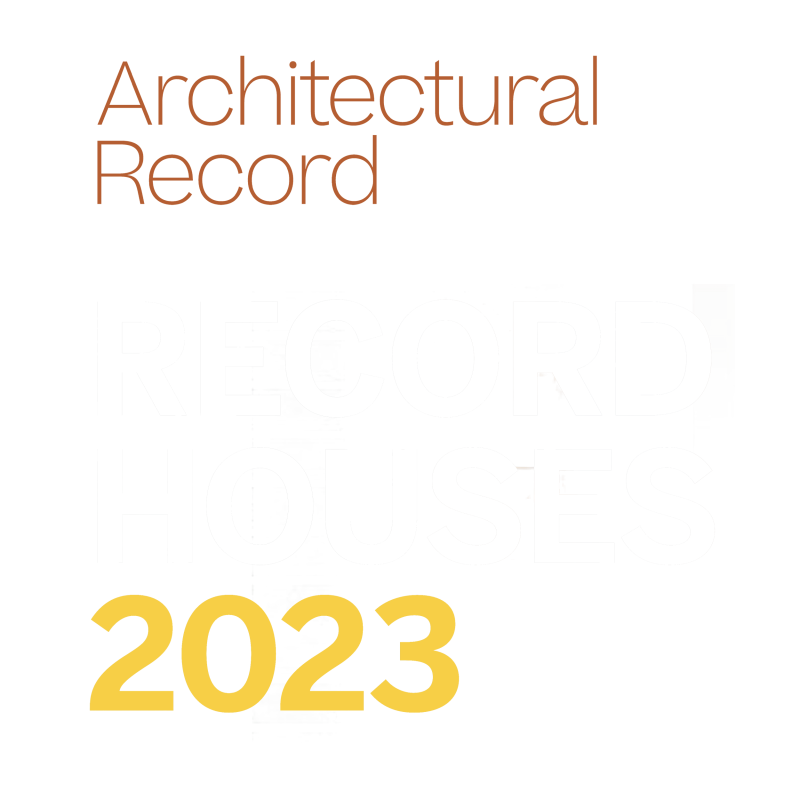






















House SIX is a 5,000 sq.ft. [465 sq.m.] single-family residence located within a dramatic landscape in Berkshire County in western Massachusetts, near New York’s Hudson Valley. The house sits on the land as a geometric cascade of space, view, natural light, and landscape, creating dynamic linkages and multiple foci for living, rest, work, and play.
The design strategy responds to and leverages the sloped site condition to present a low-slung yet tectonically expressive approach sequence, allowing the overall volume and scale of the house to unfold slowly and sequentially over time. The elongated and thin volume incorporates a dynamically folding roofline that suggests an abstract landscape feature. A bend and fold in plan allows the central living space to open onto the south and east while connecting to a zone of bedrooms to the southwest.
The main communal spaces are conceived as the heart of the house, where the spatial flow of the open kitchen, dining, and living zones is punctuated by two defining elements: a three-sided wood fireplace with skylight aperture and a black oak kitchen volume. These act as strong spatial figures anchoring the open living areas. Two black wood walls delineate the communal zone and mark its transition to more private spaces.
A significant organizing element, the three-story floating stair composed of hardwood treads suspended by vertical metal rods, animates the entry sequence in relation to the expansive eastern view of the Berkshire foothills and distant mountains beyond.
Designed to Passive House performance standards and constructed with healthy building systems and materials, House SIX exemplifies a best-in-class combination of high performance, energy efficiency, and durable building design.
The window and door systems feature custom wood frames incorporating Passive House-certified components with high-performance triple-pane insulated glazing units. These maximize thermal performance while maintaining a strong visual relationship to the surrounding landscape through carefully placed, large-format openings.
Spray foam insulation products were excluded in favor of wood fiber continuous insulation and dense-pack cellulose for walls and roof. This high-performance envelope—rated above R-40 in the walls and R-60 in the roof—supports a modest geothermal system for heating and cooling. With the use of induction cooking and geothermal-based hot water, the design achieves net-zero-ready classification on day one—supporting indoor air quality, thermal comfort, and long-term performance through durable, low-maintenance systems.
Photography: David Hiepler
